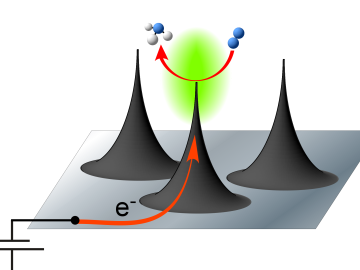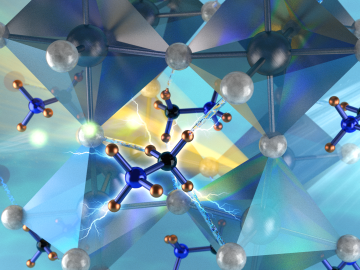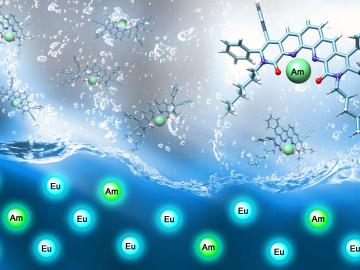
Filter News
Area of Research
- (-) Fuel Cycle Science and Technology (1)
- (-) Materials (95)
- Advanced Manufacturing (4)
- Biological Systems (2)
- Biology and Environment (56)
- Biology and Soft Matter (1)
- Building Technologies (4)
- Clean Energy (97)
- Climate and Environmental Systems (2)
- Computational Biology (2)
- Computer Science (1)
- Electricity and Smart Grid (1)
- Energy Frontier Research Centers (1)
- Fossil Energy (1)
- Functional Materials for Energy (2)
- Fusion and Fission (15)
- Fusion Energy (1)
- Isotopes (3)
- Materials for Computing (6)
- National Security (27)
- Neutron Science (40)
- Nuclear Science and Technology (14)
- Nuclear Systems Modeling, Simulation and Validation (1)
- Renewable Energy (1)
- Sensors and Controls (2)
- Supercomputing (62)
News Topics
- 3-D Printing/Advanced Manufacturing (7)
- Advanced Reactors (1)
- Artificial Intelligence (5)
- Bioenergy (4)
- Biology (3)
- Biomedical (5)
- Buildings (2)
- Chemical Sciences (11)
- Clean Water (1)
- Composites (4)
- Computer Science (3)
- Coronavirus (2)
- Critical Materials (3)
- Cybersecurity (1)
- Decarbonization (3)
- Energy Storage (14)
- Environment (4)
- Exascale Computing (1)
- Frontier (2)
- Fusion (2)
- Grid (3)
- High-Performance Computing (4)
- Isotopes (7)
- Machine Learning (2)
- Materials (25)
- Materials Science (16)
- Microscopy (8)
- Nanotechnology (12)
- National Security (2)
- Neutron Science (7)
- Nuclear Energy (4)
- Partnerships (4)
- Physics (9)
- Polymers (6)
- Quantum Science (2)
- Security (1)
- Simulation (1)
- Space Exploration (1)
- Sustainable Energy (2)
- Transformational Challenge Reactor (1)
- Transportation (3)
Media Contacts

Zili Wu of the Department of Energy’s Oak Ridge National Laboratory grew up on a farm in China’s heartland. He chose to leave it to catalyze a career in chemistry. Today Wu leads ORNL’s Surface Chemistry and Catalysis group and conducts research at the Center for Nanophase Materials ...


The Department of Energy’s Oak Ridge National Laboratory is now producing actinium-227 (Ac-227) to meet projected demand for a highly effective cancer drug through a 10-year contract between the U.S. DOE Isotope Program and Bayer.



“Made in the USA.” That can now be said of the radioactive isotope molybdenum-99 (Mo-99), last made in the United States in the late 1980s. Its short-lived decay product, technetium-99m (Tc-99m), is the most widely used radioisotope in medical diagnostic imaging. Tc-99m is best known ...


A shield assembly that protects an instrument measuring ion and electron fluxes for a NASA mission to touch the Sun was tested in extreme experimental environments at Oak Ridge National Laboratory—and passed with flying colors. Components aboard Parker Solar Probe, which will endure th...




